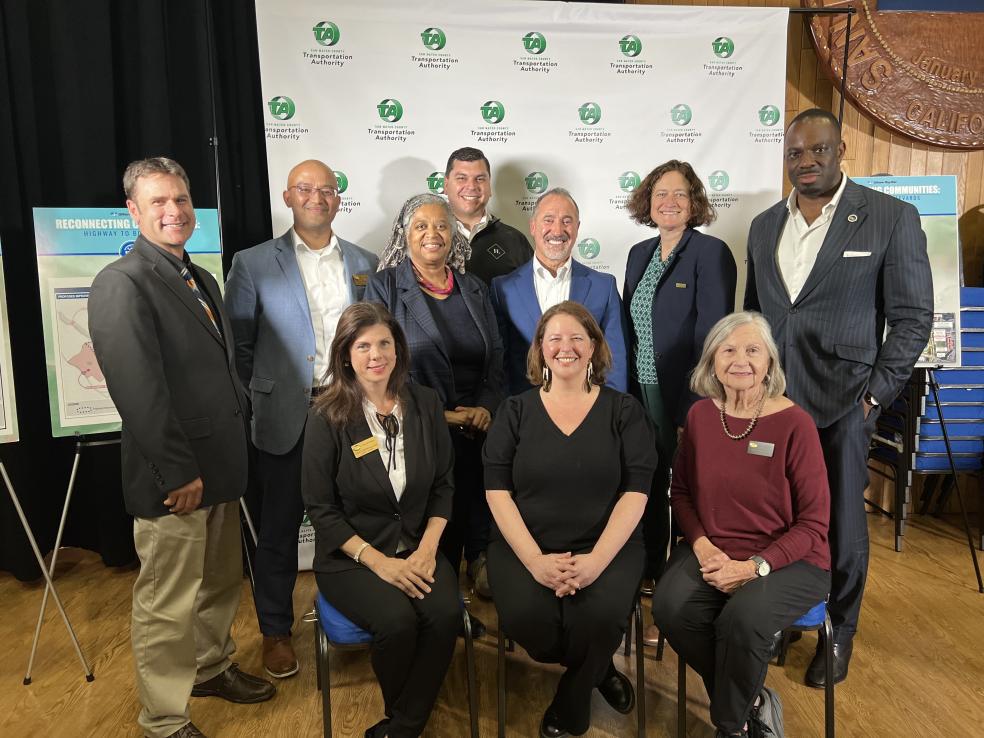
The pilot program, initially proposed in the Climate Action Plan for Transportation Infrastructure, seeks to convert underused highways that divide underserved communities into multimodal corridors and vibrant public spaces.
The Reconnecting Arcata project seeks to address mobility, accessibility, and equity challenges in this rural area caused by three state highways (U.S. Highway 101 and state Routes 255 and 299) through a comprehensive, community-driven planning process. Key solutions may include a new transit center, potential freeway cap or new crossings, and expanded walking and biking options. The state highway system created barriers to Arcata neighborhoods and nearby communities. Bridging this gap would help improve public health while providing more alternative transportation options.
“The land developed by reconnecting the east and west sides of Arcata will support our shared priorities to meet future demands of our community while creating first-class pedestrian and bicyclist connection from the campus to town,” said Meredith Matthews, mayor of Arcata.
The City of Arcata and Cal Poly Humboldt collaborated on applying for the grant, making the case that the project will eliminate the divide and bring the city and the University closer together by providing more access for pedestrians and bicyclists while freeing up more land for other uses such as housing and public space.
“We are grateful to share in this work with the Cal Poly Humboldt and Caltrans project team supported by dozens of local agencies and community members to develop the design for this monumental project that will change the landscape of the community for future generations,” Matthews said.
“This project aligns with our commitment to equity, developing smarter, valuing people, protecting the environment and defining ourselves by who we include and not who we exclude,” Provost Jenn Capps said. “This project helps us to continue to transform Humboldt into a great place to study and a wonderful place to stay and build a career. We are grateful to work in partnership with the City of Arcata and Caltrans and look forward to continued robust community engagement.”
Caltrans will assist the selected communities in working from concept to project delivery on a community-driven vision to reconnect their neighborhoods. This includes helping pilot communities to obtain additional grant support for project completion, including the application for the federal Reconnecting Communities and Neighborhoods Grant Program.
“California is once again leading the way to repair the shameful history of redlining and other exclusionary policies of the past,” said Governor Gavin Newsom. “We are advancing equity in historically underserved and underinvested areas through a community-driven vision to reconnect neighborhoods and support more vibrant spaces for Californians."
“Transportation at its best is a uniter – connecting people and communities with convenient and safe access to jobs, family and services,” said California Transportation Secretary Toks Omishakin. “Transportation at its worst is a barrier – dividing communities, increasing harms and cutting off access to opportunity. We must strive to always unite and never divide, and today represents an important step in righting the wrongs of the past by putting people and communities first.”
Caltrans will begin engaging partners in all three cities, including community-based organizations to develop, plan and ultimately build projects that address the historic transportation inequities by connecting transit, housing, jobs, parks and open spaces through community-based transportation planning, design, demolition, and/or reconstruction. This effort will help advance health and equity outcomes by removing barriers associated with transportation infrastructure.
“These collaborations will be unlike any in Caltrans history and empower a new generation of community-driven transportation decisions,” said Caltrans Director Tony Tavares. “Caltrans will work hand-in-hand with community-based partners and cities on solutions to reconnect neighborhoods that have been split by highway projects and help heal past harms.”
Click here to learn more about each project.